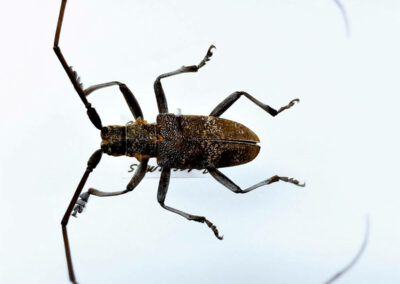Using spatial modelling to understand environmental predisposition to tree diseases
Contributors/partners Forest Research: Samantha Broadmeadow, Tree Health Research Group, Tree Health Diagnostic and Advisory Services (THDAS), ObservaTree, Paul Taylor (Climate spatial datasets); National Soil Resources Institute, James Hutton Institute, UK Centre for Ecology and Hydrology
Context
Recent research on Acute Oak Decline has demonstrated significant correlations with warm, dry parts of the country, high levels of atmospheric nitrogen deposition and low sulphur pollutant levels. Knowledge of trends between disease occurrence and environmental conditions has enabled predictions to be made describing which areas are prone to AOD infection and could be a powerful tool to identify areas in Britain where trees are and will be under stress in the future.
Identifying significant environmental factors for other tree pests and diseases could be a powerful tool to identify areas in Britain where trees are under stress now, and will be under stress in the future. This information can inform species choice for planting and support management decisions for existing woodlands, leading to better survival and resilience of existing trees, forests and woodlands.
Research aims and objectives
Project description
Outputs and audiences

Share this project on social media
Related Projects
Our Partners
Explore
Contact
© 2022 Centre for Forest Protection. All rights reserved.


